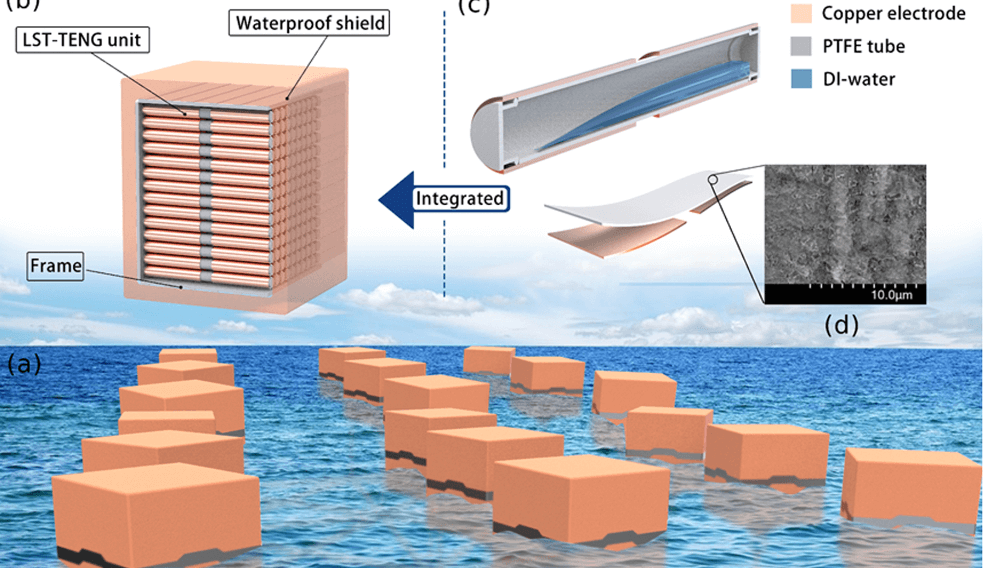Abstract
The exploitation of clean and renewable wave energy has attracted fully concern in the world wide. In this work, a high-output array of liquid-solid tubular triboelectric nanogenerator (LST-TENG) based on the contact electrification between PTFE and water was proposed. The low-frequency wave motion was simulated to systematically analyze the impacts of several factors on the electrical performance of LST-TENG to provide guidance for the fabrication of the PTFE tube and the electrode arrangement for the achievement of high wave energy transition. An increase in the length/diameter of the tube, distance and width of the electrodes made a positive impact on the output performance of LST-TENG unit. A typical LST-TENG here should be an optimum water-to-cylinder volume ratio, as well it is better to wrap electrodes from the end, especially for short electrodes. Moreover, the influences of the motion characteristics including the angle, frequency and amplitude of oscillation was also considered. To achieve high peak output, we compared the output performance of series-wound and parallel LST-TENG arrays to find that parallel connection showed linear rise with the number of units is a feasible approach to get peak output voltage exceed 500 V, which extended the potential application of the LST-TENG arrays. At the optimal operating condition, the power density achieved 228 mW/m3. This study provided the assessment of the power quality of LST-TENG and considering the diverse motion of the TENG units integrated into the blocks, which is expected to be the reference for the optimization of LST-TENG in the future.

